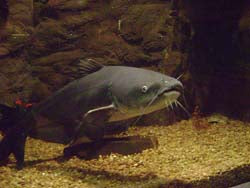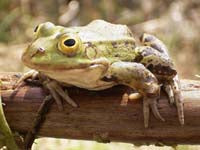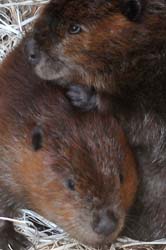A Kid's Guide to Pond Animals
Creatures of the Water: A Kid's Guide to Pond Animals
A pond is usually a shallow body of still water, either natural or artificial. This means that the water does not move as it does in a stream or a river. Ponds are often formed when rainwater or melted snow collects in a pit in the ground, or if a stream empties into a large empty area of the earth.
Ponds are smaller than lakes, but are still capable of nurturing plenty of life forms. Apart from pond plants and weeds, we can also find various types of bacteria and microscopic creatures, fish, insects, amphibians (such as toads or frogs), birds, reptiles (cold-blooded animals) and mammals (warm-blooded animals). Did you know that there can be 1,000 or more different types of animal species living in a pond?
Fish

- Catfish: These whiskered fish are bottom-feeders. They prowl along the bottom of the pond, eating small fish, dead or rotting plants, fish eggs, worms and water bugs. Catfish help to keep the pond clean and control the fish population.
- Minnows: Although minnows are usually known as tiny little fish, they can actually grow quite large in their natural habitats and typically forms large shoals. There are many different types of minnows and they may differ from one pond to another.
- Sculpin: Some types of sculpin can be found in ponds and other bodies of freshwater. They are not very good swimmers, but they are experts at hiding and camouflage.
- Largemouth Bass: The largemouth bass are among the bigger fish that swim in a pond. They eat insects, smaller fish and sometimes even frogs!
- Stickleback: Sticklebacks are usually tiny fish that can be found in ponds not only in North America but also in Europe. They can be spotted by the distinctive spikes along their bodies.
Birds

- Mallard Ducks: Mallard ducks are attracted to ponds as it provides a safe place for them to find food (small fish), bathe, nest and raise baby ducklings.
- Herons: It is easy to identify a heron since they are quite large and tall; they can easily wade around in a pond. They love eating fish and even frogs and other small animals that live near the pond.
- Canada Geese: Canada geese live in the north during warm months and then travel south for the winter. In the spring, they settle down near a pond to lay their eggs. They are large wild goose with a black head and neck, white cheeks, and a brown body.
- Kingfishers: Kingfishers are small, colorful birds that can be found near ponds in many parts of the world and most of them are found in the tropical regions. They are extremely fast and swoop down from a tree to catch a fish when they see it moving in the water.
- Blackbirds: Blackbirds often visit ponds by spring in search of food. They mostly eat insects and even peck at pond plants to find any hidden bugs.
Insects
- Dragonflies: Dragonflies are among the most eye-catching insects that can be found near a pond. They have long bodies and large, colorful wings that are usually translucent. They help to control the insect population of the pond by eating them!
- Water Beetles: These dark-colored beetles store air in their bodies to help them survive in the water. They are quite ferocious and will eat many other smaller creatures, including members of their own family!
- Caddis Flies: Caddis flies are insects that live in the water. They eat dead or rotting plant parts and help to clean the pond in this way.
- Pond Skaters: Pond skaters are special insects. They have very skinny, long legs and extremely light bodies. This enables them to run along the surface of the water without sinking!
- Mayflies: Mayflies look a little similar to dragonflies and can be quite beautiful. They are able to dance on the surface of the water, but sadly, most adult mayflies only live for less than one day.
Amphibians

- American Toad: American toads are brown, bumpy and much larger than frogs. They can live on land as well as water, but they like to lay their eggs in ponds.
- Frogs: Frogs are relatively small, green, cold-blooded creatures. They have long tongues coated with a sticky substance that makes it easy to catch flying insects. Larger frogs also eat worms and tiny fish.
- Newts: Newts are amphibians and belong to the salamander family. Newts can be brightly colored and they hunt for insects, small creatures and fish eggs for food.
- Salamanders: Salamanders are long wiggly creatures with tiny legs and feet, typically characterized by a lizard-like appearance. They love living near water and they can also be found near forests and marshes.
Mammals

- Beavers: Beavers are large and semiaquatic rodents commonly found across North America. They have long, sharp teeth to cut trees and build their homes, called a beaver dam.
- Muskrats: Muskrats are medium-sized semiaquatic rodent that look like dark brown mice or rats, but they like living in wet areas. They mostly eat plants and are experts at swimming.
- Moles: Moles like living near wet areas but they make their homes in the earth. Since they live in the ground, they usually eat worms and slugs.
The important thing to remember is that the pond acts as an ecosystem: through the pond, each of these life forms helps the other creatures to survive in some way. Think of it as a little nature community in the wild.



